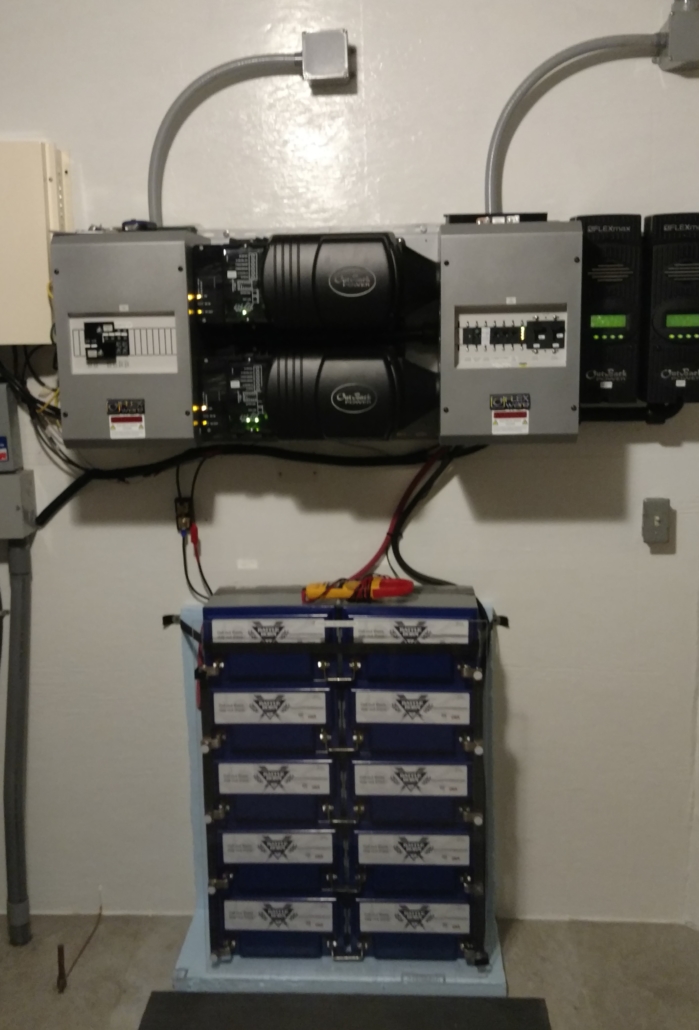Solar Electricity
At Sage Mountain Center, 3,000 watts (3kW) of photovoltaic modules (solar electric panels) and a 1,000-watt (1kW) wind generator convert natural elements into electricity. Since we are off-grid, the electricity is stored in lithium ion (li-ion) batteries for nighttime use. The batteries are recharged during the day by the solar panels and wind generator when the wind is blowing. For over 25 years Sage Mountain Center has never paid an electric bill; it has generated all of its electricity from the sun and wind. Around the world, homes and businesses using solar electric utilize grid-tied systems where they store excess energy on the grid. Their electric meters run backwards and most utilities credit these customers through a net-metering program. Because these are battery-less systems there is no backup electricity if the power goes out. Moreover, most grid-tied homes still have an electric bill because they consume more electricity than their systems generate.
An interesting development is taking place regarding the advancement and cost reduction of li-ion batteries. This battery movement is changing the paradigm for grid-tied and off-grid systems. Prices are quickly dropping for the batteries, whose key advantages over lead acid batteries are light weight, 90% efficiency, and excellent lifetime capacity. In 2017, with the help of Planetary Systems in Ennis, MT, Sage Mountain Center upgraded to li-ion batteries. Below are the specs of our current battery bank, which is smaller than our previous battery bank, but supplies the same amount of energy.
- Brand: Battle Born/Dragonfly in Reno, NV
- Type: LifePo4
- Size: 12 kW (500 ah) @ 24VDC
- Weight: 29 lbs. each
- Depth of Discharge: 100%
- Cycles: 3000 -5000
Almost every regular appliance can now be powered by solar electricity: televisions, computers, stereos, blenders, most power tools, microwaves, vacuums, washing machines, and so on. The days of old car batteries running 12VDC systems are a thing of the past. In today’s modern off-grid homes with efficient inverters all appliances function as they would in a home hooked up to the utility grid. However, because of the tremendous amount of electricity some appliances consume, such as dryers, baseboard heating, or electric stoves and ovens, these are usually operated using a propane gas or wood alternative. The average American household consumes 25,000 watts over a 24-hour period or 25 kilowatt hours of electricity a day. Because of passive solar designs and high appliance and lighting efficiency, Sage Mountain Center uses only 8,000 watts per day for 6,600 square feet of living space.

